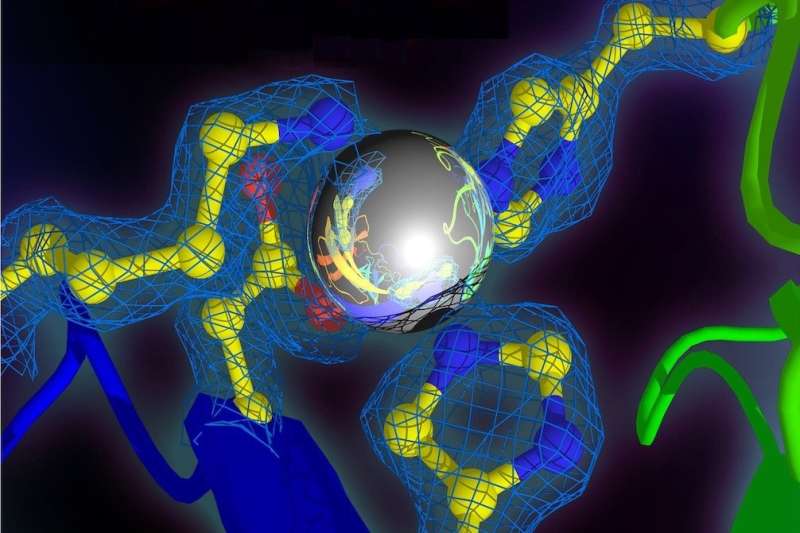A new guide for explorers of the submicroscopic world inside us

Researchers from the University of Virginia have established new guidelines for scientists mapping out the body molecule by molecule to help us better understand how our cells use metals such as iron and magnesium to maintain good health. The guidelines ultimately will benefit the battle against diseases such as cancer, assist in the development of new drugs and ensure scientific results are accurate and can be reproduced.
The new protocols aim to help scientists in the field of X-ray crystallography avoid potential pitfalls that could inadvertently compromise their work. X-ray crystallography reveals things far smaller than a scientist using a traditional light microscope could ever hope to see. It works a bit like sonar—scientists bombard molecules with X-rays, then measure the angles as the X-rays bounce off, or "diffract." They can then use that information to calculate the shape of their target.
It's a tremendously complex undertaking, of course, and there are many ways for it to go wrong. The new technical guidelines, from a team led by Wladek Minor, Ph.D., of the University of Virginia School of Medicine, aim to prevent that.
"The compilation of the best practices and potential pitfalls for the accurate characterization of a metal binding site in any protein or virus is no easy task, and requires years of combined experience and efforts from many researchers from different areas of expertise," Minor said. "We hope that our research will improve the quality and reliability of research that involves handling metal-containing samples and eventually contribute to promoting research reproducibility in both academic and commercial settings."
Forging the Way
Minor—who is already an author of one of the most cited scientific papers of all time—noted that metals play essential roles in many biological and cellular processes. "In the human circulatory system, for example," he said, "serum albumin transports zinc, while iron in hemoglobin is crucial for oxygen transport to all cells, and magnesium is a component of many enzymes."
In addition, there is an entire class of cancer drugs that is metal-based. So it is critical we have an accurate understanding of how the body interacts with metals.
"Misidentification and/or misinterpretation of metal binding sites in proteins and nucleic acids may hamper data interpretation and negatively influence future studies," said Heping Zheng, the co-corresponding author of the paper. "Biologists, pharmacologists and scientists involved in metal-based drug development should benefit from our studies."
More information: Katarzyna B Handing et al, Characterizing metal-binding sites in proteins with X-ray crystallography, Nature Protocols (2018). DOI: 10.1038/nprot.2018.018
Journal information: Nature Protocols
Provided by University of Virginia





















